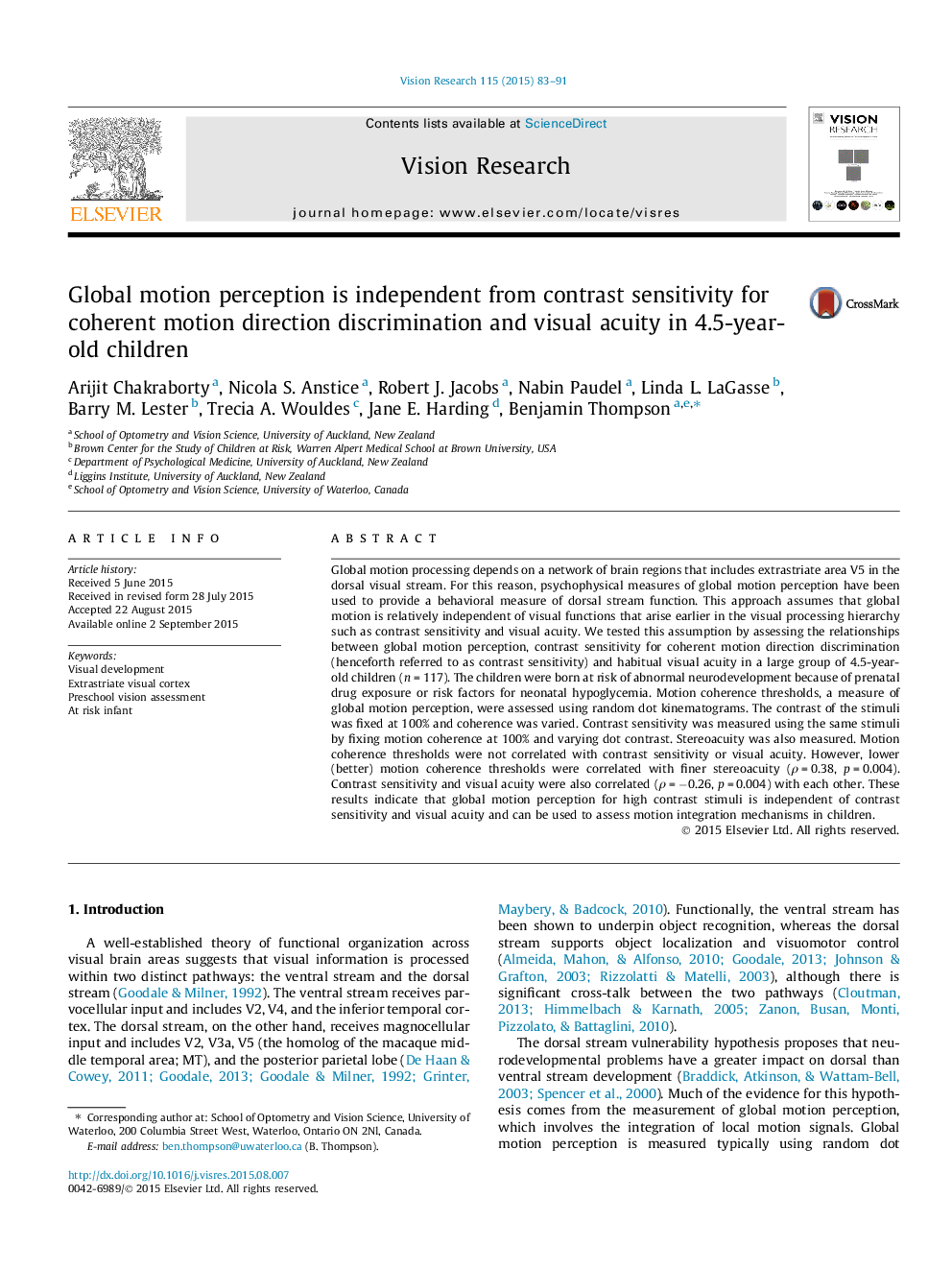| Article ID | Journal | Published Year | Pages | File Type |
|---|---|---|---|---|
| 6203130 | Vision Research | 2015 | 9 Pages |
â¢Global motion was unrelated to contrast sensitivity and acuity in preschool children.â¢Global motion was correlated with stereoacuity.â¢High contrast stimuli assess motion integration in at-risk pediatric populations.
Global motion processing depends on a network of brain regions that includes extrastriate area V5 in the dorsal visual stream. For this reason, psychophysical measures of global motion perception have been used to provide a behavioral measure of dorsal stream function. This approach assumes that global motion is relatively independent of visual functions that arise earlier in the visual processing hierarchy such as contrast sensitivity and visual acuity. We tested this assumption by assessing the relationships between global motion perception, contrast sensitivity for coherent motion direction discrimination (henceforth referred to as contrast sensitivity) and habitual visual acuity in a large group of 4.5-year-old children (n = 117). The children were born at risk of abnormal neurodevelopment because of prenatal drug exposure or risk factors for neonatal hypoglycemia. Motion coherence thresholds, a measure of global motion perception, were assessed using random dot kinematograms. The contrast of the stimuli was fixed at 100% and coherence was varied. Contrast sensitivity was measured using the same stimuli by fixing motion coherence at 100% and varying dot contrast. Stereoacuity was also measured. Motion coherence thresholds were not correlated with contrast sensitivity or visual acuity. However, lower (better) motion coherence thresholds were correlated with finer stereoacuity (Ï = 0.38, p = 0.004). Contrast sensitivity and visual acuity were also correlated (Ï = â0.26, p = 0.004) with each other. These results indicate that global motion perception for high contrast stimuli is independent of contrast sensitivity and visual acuity and can be used to assess motion integration mechanisms in children.
